The Road Forward
Marie Clements
2017
| 101 min 09 sec
Prizes and awards
Official SelectionHot Docs 2017
Official SelectionDOXA Documentary Film Festival 2017
Official SelectionAtlantic Film Festival 2017
Official SelectionAtlantic Film Festival 2017
Award WinnerDreamspeakers International Film Festival 2017
Best DirectorAmerican Indian Film Festival San Francisco 2017
Official SelectionImagineNATIVE Film and Media Arts Festival 2017
Official SelectionMontreal First Peoples Festival 2018
Synopsis
In this inspired musical documentary, writer/director Marie Clements connects a major turning point in Canada’s civil rights history—the beginnings of Indian Nationalism in the 1930s—with the powerful momentum of First Nations activism today.
Interviews with key members of Canada’s oldest First Nations organizations, the Native Brotherhood and Native Sisterhood, reveal the starkly racist politics that inspired the movement as well as how a humble newspaper became a powerful force for change. The Native Voice established a lifeline between the First Nations of British Columbia, uniting them to advocate socially, politically and legally in order to effect profound change on a national level.
The documentary’s stunningly shot musical sequences, performed by an ensemble of some of Canada’s finest vocalists and musicians, bring to life the past 80 years of politics and protest on the West Coast and across the country. Inspired by articles from The Native Voice, the superbly produced story-songs range from heartbreaking ballads about the missing and murdered Indigenous women to inspirational anthems for moving forward, seamlessly connecting past and present with soaring vocals, blues, rock, and traditional beats.
Interwoven throughout the documentary are deeply moving interviews with the musicians and singers speaking intimately about what it means politically and personally to be contemporary First Nations artists, and the passion behind their work.
The Road Forward is a rousing tribute to the fighters for First Nations rights, a soul-resounding historical experience, and a visceral call to action.
The Road Forward, a musical documentary by Marie Clements, connects a pivotal moment in Canada’s civil rights history—the beginnings of Indian Nationalism in the 1930s—with the powerful momentum of First Nations activism today.
Clements paints an electrifying picture of how a tiny movement, the Native Brotherhood and Native Sisterhood, became a powerful voice for social, political and legal advocacy, eventually effecting profound change at the national level. The Road Forward’s stunningly shot musical sequences, performed by an ensemble of some of Canada’s finest vocalists and musicians, seamlessly connect past and present with soaring vocals, blues, rock, and traditional beats.
The Road Forward is a rousing tribute to the fighters for First Nations rights, a soul-resounding historical experience, and a visceral call to action.
Trailer
Clip #1
Clip #2
Clip #3
Clip #4
Clip #5
Clip #6
Clip #7
Q & A WITH FILMMAKER MARIE CLEMENTS
1. This film had an unusual evolution. Could you tell us a little bit about how it grew to become this fabulously inventive and inspiring feature-length musical documentary?
This project originally began as a 10-minute live performance piece commissioned by the Vancouver Cultural Olympiad for the Aboriginal Pavilion in conjunction with the 2010 Winter Olympics.
The idea was to honour B.C.’s history, so I started researching and reading online and came across the archives of the Native Brotherhood and Sisterhood, the oldest Native organization in the country. Their parent organization, the Native Fishing Association, is located in West Vancouver, close to me.
Bill Duncan gave me access to their archives—actually a huge boardroom, filled with stacks of 60 years’ worth of their newspaper, The Native Voice. It was profoundly moving to read our history written by Aboriginal news editors and news stringers, mostly activists grounded here in BC, but also spanning across Canada and into the United States.
It made sense, then, that these stories should somehow be expressed in voice, because that is what they were bearing witness to. The story songs I wrote for The Road Forward drove a narrative inspired by The Native Voice articles. I reached out to Jennifer Kreisberg as a lead composer, not just because of her immense talent, but also because of the legacy of her work: the layering of voices that come together in harmonies, which again mirrored the will of the Native Brotherhood and Sisterhood that their voices be brought together in unity.
I also felt strongly that this project should be female-led, as The Native Voice newspaper was probably one of the only newspapers at the time led by women. Not only the founders of the newspaper, but also top editors and news writers were women, which is extremely rare today, never mind in the 1930s. I think this lent itself to a certain distinct viewpoint.
After the 10-minute performance in the Aboriginal Pavilion at the 2010 Winter Olympics, it became clear that the aesthetic for The Road Forward was less theatrical and more musical; there was a natural evolution toward adding more songs, more stories and more singers and musicians. Other male guest composers collaborated with Jenn and with me on new songs, and we began to form a really tight ensemble committed to the stories and how they came to be vocalized. So the first 10-minute performance in 2010 turned into a workshop production in 2013 at the PuSh International Performing Arts Festival in Vancouver, which later evolved into a live-performance production that premiered to sold-out crowds at the PuSh Festival in 2015.
These shows featured some of our finest Aboriginal talent from across Canada and the US, many of whom are featured in the film we are talking about now.
2. So after working with many of the same artists in various incarnations of The Road Forward over the years, what do you feel that this collaborative process brought to the project?
Many of us have worked together artistically on different projects over a long period of time, so the process was natural in the sense that we knew each other, or knew each other’s work, or appreciated each other’s commitment and practice. There was a strength in musically bringing together traditional and contemporary artists from different parts of the country: everyone had the understanding that their own personal, cultural and political histories contributed to the larger vision of The Road Forward.
3. Your background as a writer/director for live performance and theatre probably freed you to turn the conventions of historical documentary upside down when making this film. Can you talk about how you chose which historical moments to highlight, and how you decided to weave the story elements together?
The Road Forward was a beast, but a beautiful beast. I wanted to replicate how we experience information from newspapers: how we read, how we are caught by certain headlines, how that draws us in and how we can be so affected by a headline and story that we begin to see it, to imagine what it might have been like. The Road Forward has always been led by word: I selected newspaper articles that inspired me, wrote lyrics for the story songs based on those articles, then worked with the composers to fuse together both the intention and the musicality so we could get inside the mind of the witness. The Road Forward became its own distinct form, encircling documentary—those early activists and those who followed—and integrating stories through song that were told musically and cinematically.
The best thing about coming from a writer/director practice and a highly visual live/performance background is that it is very disciplined. The bones of the story, the script or words, are the structure, and the responsibility of finding how that is executed comes in the layering of a story that is always changing, yet demands precision in intention, rhythm, visuals, sound and music. The process of how that manifests in live performance versus film is very different, but they are both disciplines that are very alive, each insisting on an unrelenting vigour.
4. In the conservative, racist times of Canada in the 1930s, the Native Brotherhood and Native Sisterhood used their newspaper, The Native Voice, as a powerful grassroots vehicle for political activism. Against staggering odds, they managed to effect profound change. How did you come up with the idea to bring the hope and energy of those times to life using the very powerful (and incredibly catchy) “story-songs” you wrote for the film?
It’s hard not to be influenced by the Native Brotherhood and Sisterhood in an extremely positive way. I think there is something so profound about being able to resist in a way that has grace and dignity, and yet brings incredible and lasting change. The legacy of this is why we are seeing the power of current movements, from Idle No More to Standing Rock.
We are literally standing on the shoulders of giants.
5. Along with hearing from some of the founders of the Native Brotherhood and Sisterhood, you integrate past and present by interviewing some of the best Indigenous musicians, singers and performers in the country. You have said, “Being an artist is an act of activism.” Can you talk a little bit about your connection to that idea from your perspective as an Aboriginal artist?
A good friend once told me when I was starting out that a brown person just standing on a stage was an act of activism. I didn’t totally get the depth of that until later, but it has definitely stayed with me because it is a simple and hard truth. I think there is a time in every Aboriginal artist’s life where you just want to practise your art, but you come to realize that you will have to fight for that right on every level imaginable. This realization brings its own hardship, but also its own purpose and artistic freedom. The Road Forward features some of our most renowned musical talent; it also speaks to their ability to survive and their commitment to fight for change through their own individual work.
6. The Road Forward not only revitalizes a very important trajectory in our country’s history, but also celebrates and honours the shift happening now as First Nations, Métis and Inuit peoples step into their power as rightful stakeholders in our country’s present and future. You have described the film as “a tribute and a call to action…”
I think Aboriginal activism in Canada is a multigenerational experience. It is deeply personal and often ignited by the injustices suffered by our grandfathers and grandmothers, our fathers and mothers, our sisters and brothers. In this way, it is rising not just from a political ideology or cultural perspective, but from a cellular cry for justice—that every human has a right to experience humaneness.
HISTORICAL OVERVIEW AND TIMELINE OF INDIGENOUS ACTIVISM
Native Brotherhood of British Columbia (NBBC)
The Native Brotherhood of British Columbia (NBBC) is the oldest active Indigenous organization in Canada. It was founded in 1931 in response to the conditions of the Great Depression. During that time, the price of fish had plummeted and Indigenous people were not eligible for relief. The situation was dire; Aboriginal leaders knew they had to organize in order to advocate for their people. Alfred Adams (Haida) led the formation of the NBBC and modelled it on the Native Brotherhood of Alaska. At the time, it was illegal for groups of Indigenous people to meet, but the NBBC got around the law by organizing under the umbrella of the Church. For this reason, the Brotherhood’s anthem was “Onward, Christian Soldiers.”
The Native Brotherhood ushered in a new phase of Indigenous activism that focused on the socioeconomic improvement of Indigenous lives.
The Native Sisterhood of British Columbia was formed in 1933. It used already established women’s auxiliary groups to form the basis of its membership. The Sisterhood worked at the local branch level, holding meetings and raising funds for the Brotherhood.
The Native Voice Newspaper
Launched in 1946, The Native Voice newspaper featured stories about and by Native people. It was technically the “official organ of the Native Brotherhood of British Columbia” and originally served as a kind of newsletter about the group’s activities, providing a larger social context as well through pieces from across North America. Because of its affiliation with the NBBC, The Native Voice offered an excellent record of the changes to the fishing industry in B.C. and to the numerous canneries that served as a major employer for Coastal First Nations people.
The Native Voice featured a number of notable activists as regular columnists and editors. Maisie Hurley was instrumental in getting The Native Voice started, and served on the editorial board as publisher and director for years. Without her commitment, it’s doubtful the paper would have existed as a forum for Natives and non-Natives to discuss issues relevant to the Indigenous communities in BC. Kitty Carpenter, the President of the Native Sisterhood of British Columbia, was a regular columnist, reporting on the group’s activities. Jimalee Burton, an artist well known for her poetry, prose, and graphics, served as an editor for 15 years, sharing her stories and relevant news from Oklahoma.
The last issue of The Native Voice was published in 2002.
The Constitution Express
In 1867, the British Parliament passed the British North American Act, legislation that outlined the Constitution for the new Dominion of Canada. The Act was British law and therefore could only be changed in British courts.
In the early 1980s, Prime Minister Trudeau began the process of patriation; transferring the Act from the authority of the British government to the Canadian government.
After reviewing the position of the federal government in the proposed patriation of the Constitution, the Union of British Columbia Indian Chiefs (UBCIC) discovered that First Nations people would lose their Indigenous rights through this new legislation.
Led by George Manuel, the UBCIC decided to take action. They launched the Constitution Express, a massive movement to fight any attempt at patriation that left out the rights of Indigenous people. Two trains were chartered to make the 4,360-km trek from Vancouver to Ottawa and deliver a message to the federal government: that First Nations peoples have rights, and that these rights have legal basis through treaties and historical agreements with the British government.
The Express did not receive any federal funding. First Nations fundraised for train fares, and First Nations communities from all across Canada came together to support the cause, making the Constitution Express a people’s movement as well as a political lobby.
The final result was the addition of Section 35 to the Constitution. It entrenched the rights of Indigenous people into law.
Timeline
| 1876 |
The Indian Act is made law by the Parliament of Canada. The Act defines who is and who is not considered an Aboriginal person in Canada. This determines who is eligible to live on reserve lands. |
| 1884 |
Attending school becomes mandatory for Aboriginal children; the federal government begins to oversee residential schools. |
| 1888 |
The Fisheries Act restricts Aboriginal fishermen to fishing for food; sale and barter of fish is prohibited. Commercial fishing requires a license, issued to canneries. |
| 1895 |
The Indian Act is amended to outlaw all dances, ceremonies and festivals that involve the wounding of animals or humans, or the giving away of money or goods. |
| 1906 |
Skwxwú7mesh Chief Capilano, Quw’utsun Chief Charley Isipaymilt, and Secwepemc Chief Basil David travel to London, England, to discuss the need to settle land claims with King Edward VII, and are given an audience. |
| 1911 |
The Indian Act is amended to allow municipalities and companies to expropriate portions of reserves, without surrender, for roads, railways, and other public works. |
| 1913 |
Nisga’a Land Committee travels to Ottawa to present a land-claim petition. |
| 1915 |
The Interior Tribes of BC is formed in southern British Columbia. They support the Nisga’a petition and send a petition of their own to Ottawa. |
| 1916 |
The Allied Tribes of BC is established to defend Aboriginal rights and title. |
| 1920 |
Indian Act is amended to allow the Department of Indian Affairs and Northern Development (DIAND) to ban hereditary rule of bands. |
| 1923 |
Aboriginal peoples are allowed to become commercial fishermen in BC. |
| 1927 |
A provision added to the Indian Act curtails the ability of Aboriginal peoples to secure legal representation by requiring the Superintendent General to approve any legal appointments. |
| 1927 |
Allied Tribes of British Columbia collapses. |
| 1929 |
Black Tuesday: stock market crash triggers the Great Depression (1929–1939). |
| 1931 |
The Native Brotherhood of British Columbia is founded by Alfred Adams (Haida) and modelled on the Native Brotherhood of Alaska. |
| 1933 |
The Native Sisterhood of British Columbia is formed. Brenda Campbell from the Heiltsuk Nation is its first president. |
| 1936 |
The Pacific Coast Native Fishermen’s Association is formed by the Southern Kwakiutl and Nootka. Membership includes the entire Kwakiutl linguistic group, making it the strongest and most effective Aboriginal organization of that time. |
| 1939 |
Canada enters WWII. Indigenous peoples from every region of Canada serve in the armed forces, fighting in every major battle and campaign of the conflict. |
| 1942 |
First head office of the Native Brotherhood established in Vancouver by Business Agent Andrew Paull (Skwxwú7mesh). |
| 1942 |
Native Brotherhood of British Columbia and Pacific Coast Native Fishermen’s Association amalgamated. |
| 1944 |
Wales-born Maisie Hurley is named an associate life member of the Native Brotherhood of British Columbia. She was the first woman admitted to the political organization. Maisie and her husband, Tom Hurley, advocated equal justice for First Nations and other disenfranchised people. |
| 1945 |
End of WWII. |
| 1945 |
Native Brotherhood revises its constitution and becomes incorporated, becoming a legally chartered organization with specific rights and obligations. |
| 1946 |
The first Indigenous newspaper, The Native Voice, is established.
The paper is launched with Maisie Hurley’s investment of $150. |
| 1946 |
A special joint committee is formed to revise the Indian Act.
This is the result of social awareness partly brought about by Indigenous involvement in WWII. A delegation from the Native Brotherhood appears before the committee on May 1, 1947. The Brotherhood presents on a wide range of issues with carefully thought-out goals for achieving a better future for Indigenous peoples. |
| 1949 |
Aboriginal males receive the right to vote in BC. Frank Calder (Nisga’a) becomes the first Aboriginal person elected as a Member of the Legislative Assembly in BC. |
| 1958 |
Prime Minister Diefenbaker appoints Canada’s first Aboriginal Senator, James Gladstone (Kainai Nation). |
| 1960 |
Aboriginal persons are granted the right to vote in federal elections. |
| 1982 |
The Constitution Act recognizes the rights of Aboriginal people. |
| 1985 |
Bill C-31 amends the Indian Act by changing the meaning of “status.” This eliminates discrimination against women and allows for reinstatement of status to those who lost or were denied it in the past. This amendment allows Indian Bands to determine their own membership rules. |
| 2002 |
Last issue of The Native Voice is published. |
| The Constitution Express |
| 1980 |
| September 1980 |
George Manuel orders review of the federal government’s position on patriation of the Canadian Constitution. |
| October 1980 |
A “state of emergency” is declared In Indian World, the official voice of the UBCIC. This mobilizes First Nations communities to join the fight. The Constitution Express movement is formed. Its goal is to mobilize Aboriginal people from across the country to demand inclusion in the new Constitution. |
|
Significant grassroots fundraising takes place to pay for expenses related to travel. |
| November 5, 1980 |
The UBCIC News Bulletin releases the Constitution Express schedule. |
| November 24, 1980 |
Constitution Express trains depart. Two trains leave Vancouver and head for Ottawa. At 8 p.m., the first half of the Constitution Express, Train #104, leaves Vancouver for Ottawa via Calgary and Regina. At 9:45 p.m., the second half of the Constitution Express, Train #102, leaves Vancouver for Ottawa via Edmonton and Saskatoon. Train #104 makes 14 stops prior to arriving in Winnipeg and train #102 makes 16 stops prior to arriving in Winnipeg. |
| November 26 |
The First Nations community in Winnipeg shows up with soup, bannock, and drums to greet both trains. |
|
RCMP agents pose as porters on the train after it departs from Winnipeg. When the train arrives at a remote location, the agents instruct the leaders to evacuate it, claiming there’s a bomb threat. All passengers, including children and elders, are forced to stand outside in the dark while the train is searched. Participants believe the purpose of the bomb scare is to allow the RCMP to search for weapons due to concerns over whether Constitution Express demonstrations will be violent. |
| November 28
|
The train arrives in Ottawa at 9:30 a.m. with almost 1,000 First Nations people aboard. Despite the fences put up by the Trudeau government, a peaceful protest ensues. Organizers hold conferences, workshops, and demonstrations until December 5. |
| December 6 |
The Constitution Express continues on to New York to raise awareness and ask United Nations officials to intervene as mediators between the Indian governments of Canada and the Canadian and British governments. |
| 1981 |
| November 1, 1981 |
The Constitution Express delegation heads to Europe. Stops include the UK, Germany, Holland and Belgium. British Parliament is called on not to patriate the Constitution until it includes Aboriginal rights. |
| 1982 |
|
Section 35 is added to the Constitution Act. Section 35 recognizes Aboriginal rights, including rights related to the historical occupancy and use of the land by Aboriginal peoples. It also recognizes and affirms treaty rights. |
| April 17, 1982 |
Canadian Constitution written into law with Section 35 included. |
REFERENCES
The Road Forward: History. Red Diva Projects http://www.theroadforward.ca/about1
The Indian Act, 1876. Government of Saskatchewan and First Nations. Retrieved from http://www.tidridge.com/uploads/3/8/4/1/3841927/the_indian_act.pdf
Enns, C. (2015, April 30). The Journey of the Constitution Express to Ottawa. doi:http://dx.doi.org/10.14288/1.0103579
Brown, P. T. (1993). Cannery Days: A Chapter in the Lives of the Heiltsuk (Thesis). University of British Columbia. Retrieved from https://open.library.ubc.ca/cIRcle/collections/ubctheses/831/items/1.0087322
Fortney, S. Entwined Histories: Exploring Native-Newcomer Relations via The Native Voice. North Vancouver Museums & Archives and The Squamish Nation. Retrieved from http://nvma.ca/wp-content/uploads/2014/04/Newcomer_Relations_Online_Materials.pdf
Government of Saskatchewan and First Nations. The Indian Act, 1876. Retrieved from http://www.tidridge.com/uploads/3/8/4/1/3841927/the_indian_act.pdf
O’Donnell, J. P. (1985). The Native Brotherhood of British Columbia 1931–1950: A New Phase in Native Political Organization (Thesis). University of British Columbia. Retrieved from https://open.library.ubc.ca/cIRcle/collections/831/items/1.0096506
red diva projects. The Road Forward: History. http://www.theroadforward.ca/about1
Images
Loading...
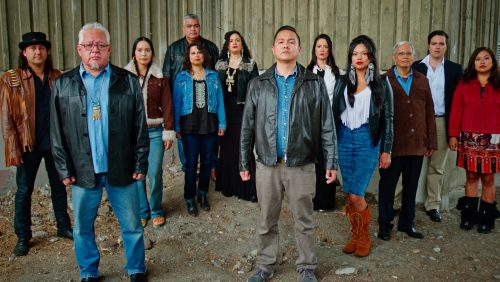 Photo: Rosamond Norbury
Photo: Rosamond Norbury
Download
Loading...
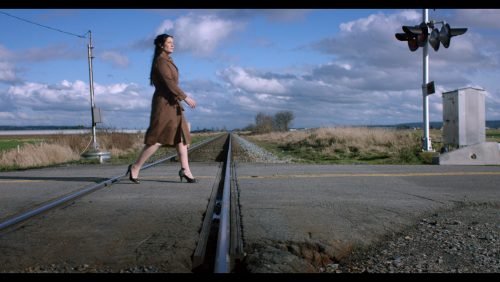
Download
Loading...
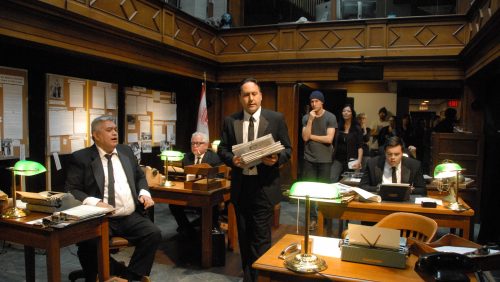 Photo: Rosamond Norbury
Photo: Rosamond Norbury
Download
Loading...
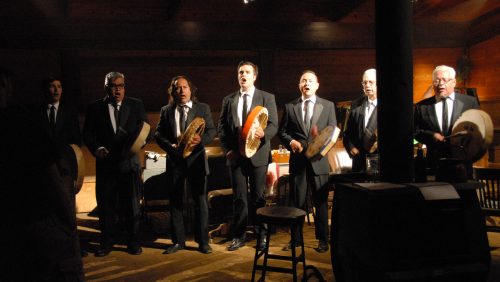 Photo: Rosamond Norbury
Photo: Rosamond Norbury
Download
Loading...
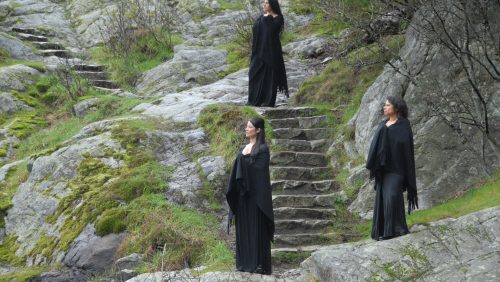 Photo: Rosamond Norbury
Photo: Rosamond Norbury
Download
Loading...
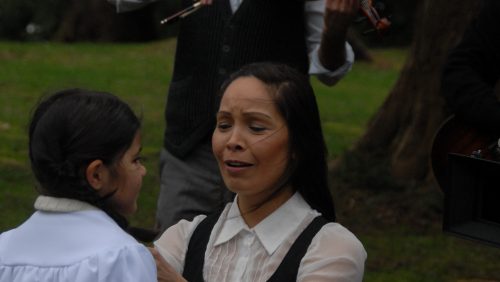 Photo: Rosamond Norbury
Photo: Rosamond Norbury
Download
Loading...
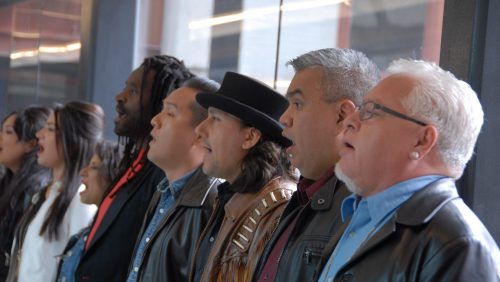 Photo: Rosamond Norbury
Photo: Rosamond Norbury
Download
Loading...
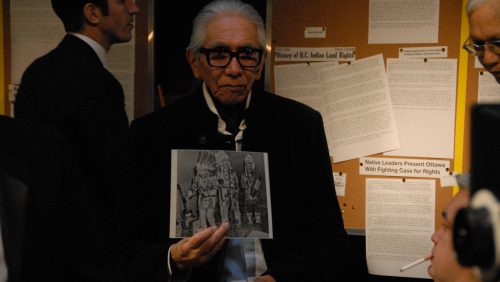 Photo: Rosamond Norbury
Photo: Rosamond Norbury
Download
Loading...
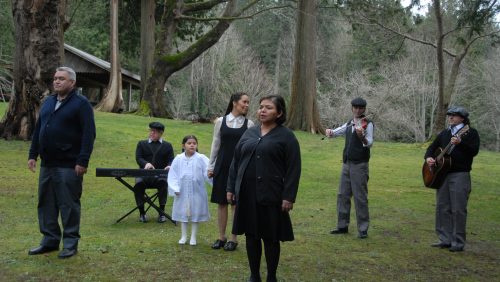 Photo: Rosamond Norbury
Photo: Rosamond Norbury
Download
Loading...
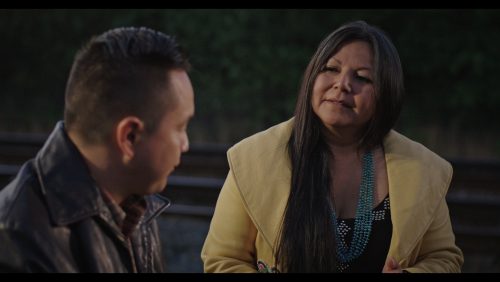
Download
Loading...
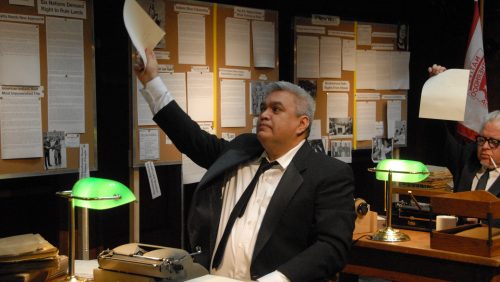 Photo: Rosamond Norbury
Photo: Rosamond Norbury
Download
Loading...
 Photo: Rosamond Norbury
Photo: Rosamond Norbury
Download
Loading...
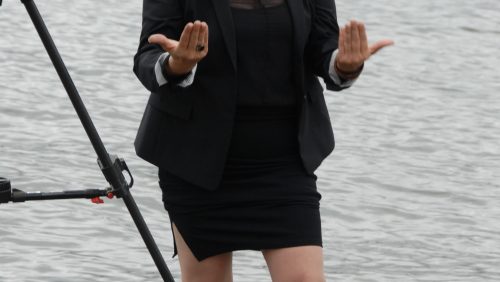 Photo: Rosamond Norbury
Photo: Rosamond Norbury
Download
Loading...
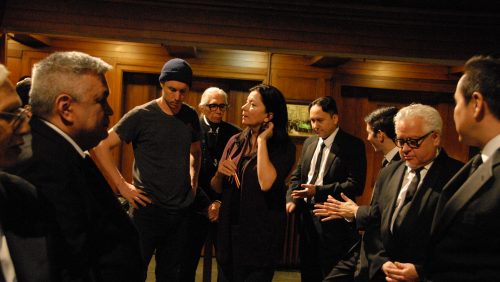 Photo: Rosamond Norbury
Photo: Rosamond Norbury
Download
Loading...
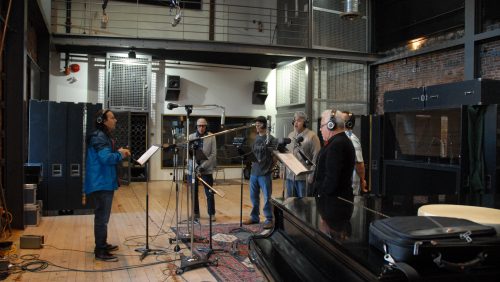 Photo: Rosamond Norbury
Photo: Rosamond Norbury
Download
Loading...
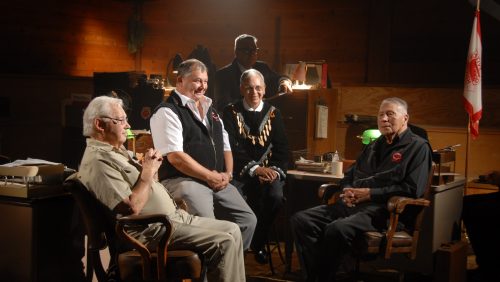
Download
Loading...
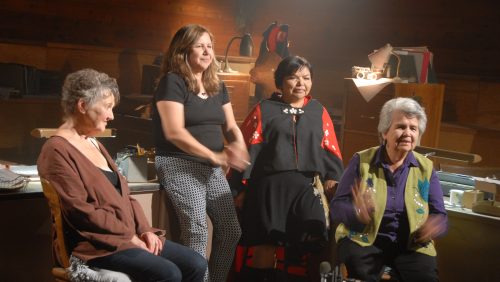
Download
Promotional Materials
TEAM
Marie Clements
Writer, Director
Photo
Photo : Emily Cooper
Shirley Vercruysse
Producer, Executive Producer
Photo
Photo : Myriam Frenette
Jenn Strom
Editor
Photo
Photo : Gene Lin
Wayne Lavallee
Composer
Photo
Photo : Mark Maryonovich
Mike McKinlay
Director of Photography
Photo
Photo : Mike McKinlay
James Boatman
Production Designer
Photo
Photo : Paula Boulanger
Troy Slocum
Sound Designer
Photo
Photo : Troy Slocum
Chelsea Graham
Costume Designer
Photo
Photo : Rachel Bradbury
ENSEMBLE
Richard E. Brown
Singer, Drummer
Photo
Ronnie Dean Harris
Singer
Photo
Shakti Hayes
Singer
Photo
Jennifer Kreisberg
Singer
Photo
Jeremy James Lavallee
Singer, Fiddle
Photo
Wayne Lavallee
Composer
Photo
Photo : Mark Maryonovich
Cheri Maracle
Singer
Photo
Shamantsut/Amanda Nahanee
Singer
Photo
Delhia Nahanee
Singer
Photo
Marissa Nahanee
Singer
Photo
Latash-Maurice Nahanee
Singer, Hand Drummer
Photo
Corey Payette
Singer, Hand Drummer
Photo
Murray Porter
Singer, Keyboard
Photo
Michelle St. John
Singer
Photo
Russell Wallace
Singer, Hand Drummer
Photo
DOCUMENTARY SUBJECTS
Edwin Newman
Documentary Subject
Photo
Henry Clifton
Documentary Subject
Photo
Thomas Berger
Documentary Subject
Photo
Vera Newman
Documentary Subject
Photo
Photo : Rosamond Norbury
Karen Jeffrey
Documentary Subject
Photo
Moira Movanna
Documentary Subject
Photo
Doreen Manuel
Documentary Subject
Photo
Vicki Lynne George
Documentary Subject
Photo
Lorna Williams
Documentary Subject
Photo
Credits
Written and Directed by
Marie Clements
Producer
Shirley Vercruysse
Editor
Jenn Strom
Composer
Wayne Lavallee
Director of Photography
Mike McKinlay
Production Designer
James Boatman
Sound Designer
Troy Slocum
Costume Designer
Chelsea Graham
Story Song Cast (in alphabetical order)
Indian Man
Ed Nahanee, Evan Leslie Adams
Native Voice Stringer, Leonard George
Native Voice Stringer, Ronnie Dean Harris
Native Voice Stringer, Wayne Lavallee
Native Voice Stringer, Jeremy James Lavallee
Tom Hurley, Stephen E Miller
Native Voice Stringer, Latash-Maurice Nahanee
Native Voice Stringer, Corey Payette
Native Voice Stringer, Murray Porter
Native Voice Stringer, Russell Wallace
This is How it Goes
Maisie Hurley, Patti Allan
Husband, Glen Andrew Brkich
Hotel Manager, William J Croft
Daughter, Amber Georgeson
Daughter, Kimowin Lavallee
Mother, Cheri Maracle
Restaurant Manager, Joseph Patrick Keating
Good God
Choir Singer, Shakti Hayes
Young Boy, Makwa Kewistep
Young Boy, Pawaken Koostachin-Chakasim
Fiddle Player, Jeremy James Lavallee
Guitar Player, Wayne Lavallee
Keyboard Player, Murray Porter
Choir Singer, Delhia Nahanee
Young Girl, Shekayah Lynn Silvey
Choir Singer, Russell Wallace
1965
Mother, Michelle St. John
Mourning Mother, Jennifer Elizabeth Kreisberg
Mother, Cheri Maracle
If You Really Believe
George Manuel, Ronnie Dean Harris
Herself, Doreen Manuel
My Girl
Mother, Michelle St. John
Daughter, Imajyn Cardinal
The Road Forward
Singer, Drummer, Richard E. Brown
Singer, Ronnie Dean Harris
Singer, Shakti Hayes
Singer, Jennifer Elizabeth Kreisberg
Singer, Fiddle, Jeremy James Lavallee
Guitar, Wayne Lavallee Singer
Singer, Cheri Maracle
Singer, Shamantsut Amanda Nahanee
Singer, Delhia Nahanee
Singer, Marissa Nahanee
Singer, Hand Drummer, Latash-Maurice Nahanee
Singer, Hand Drummer, Corey Payette
Singer, Keyboard, Murray Porter
Singer, Michelle St. John
Singer, Hand Drummer, Russell Wallace
Documentary Subjects, Vancouver (in order of appearance)
Edwin Newman
Henry Clifton
Latash-Maurice Nahanee
Thomas Berger
Wayne Lavallee
Richard E Brown
Russell Wallace
Jeremy James Lavallee
Ronnie Dean Harris
Murray Porter
Corey Payette
Vera Newman
Karen Jeffrey
Delhia Nahanee
Moira Movanna
Marissa Nahanee
Cheri Maracle
Shakti Hayes
Michelle St. John
Jennifer Elizabeth Kreisberg
Shamantsut Amanda Nahanee
Doreen Manuel
Vicki Lynne George
Lorna Williams
Documentary Subjects, Prince George
Shelby-Lynn Davis
Marion Erickson
Stephanie Erickson
Morgan George
Karista Olson
Lorretta J. Pelletier
Joan B. Sutherland
Jody Thomas
Ashley Wilson
Martha Wilson
Bonnie Wisla
BC & Yukon Studio
Associate Producer
Teri Snelgrove
Production Supervisor
Jennifer Roworth
Studio Administrator
Carla Jones
Technical Coordinator
Wes Machnikowski
Production Coordinator
Kathleen Jayme
Justin Mah
Kristyn Stilling
Production Crew
Production Manager
Nick Wade
Caroline Coutts
1st Assistant Director
Kate Weiss
2nd Assistant Director
Matthew Tingey
Sound Recordist
Brent Calkin
Jeffrey Henschel
Boom Operator
Lisa Kolisnyk
Sound Assistant
Daphne Chung
Assistant Production Designer
Andrew Pommier
Set Decorator
Rebecca Sjonger
Sancha Alicia Tatlock
Assistant Set Decorator
Hunter Cheveldave
Graham Talbot
Manzoor Ahmed Wani
Head of Props
Dana Dolezsar
Props Assistant
Kasha Toolsee
1st Assistant Camera
Lukas Fournier
Margot Guirado
Wes Machnikowski
2nd Assistant Camera
Mikael Bidard
Odessa Shuquaya
2nd Camera Operator
Jared Brendan Boyce
Daniel Rocque
Digital Technician
George Faulkner
Key Grip
Owen Stambuck
Gaffer
Paul T. Murakami
Grip/Electric Swing
Terrance Azzuolo
Movement Coach
Wendy Gorling
Script Supervisor
Nisha Platzer
Wardrobe Assistant
Kevin Eade
Mika Laulainen
Hair & Make-Up
Ashley Seymour
Hairstylist
Magdalena Kelly
Hair/Make-Up Assistant
Keesha Dawson-Harrison
Location Manager
Nick Wade
Odessa Shuquaya
Location Scout
Rachael Dudley
Location Assistant
April Johnson
Kassia O’Connor
Craft Service
Stefan A. Skoronski
Researchers
Amanda Burke
Thanh Nguyen
Mary Doherty
Sandra Mendenhall
Paloma Hazel Pacheco
Paula Sawadsky
Transcription
Tracy Sitter
Stills Photographer
Rosamond Norbury
Production Assistant
Colin Van Loon
Richard Wilson
Milena Salazar
Story Editor
Paula Danckert
Extras Casting
Rosemary A. Georgeson
Community Coordinator, Prince George
Janet Rogers
Visual Effects and Animation Supervisor
Jenn Strom
Animators
Prajay Mehta
Jenny Breukelman
Elisa Chee
Jenn Strom
Visual Effects Artists
The Sequence Group
Bun Lee
Jenn Strom
Trevor Gent
Jenny Breukelman
Storyboard Artist
Lauren Budd
Online Editor
Serge Verreault
Re-Recording Mixer
Jean Paul Vialard
Marketing Manager
Leslie Stafford
Publicist
Katja De Bock
Music
Indian Man Chant
Written, Composed and Arranged by Wayne Lavallee
Performed by
Jeremy James Lavallee
Latash-Maurice Nahanee
Ostwelve / Ronnie Dean Harris
Murray Porter
Russell Wallace
Leonard George
Indian Man
Written by Marie Clements
Composed and Arranged by Wayne Lavallee
Performed by Wayne Lavallee
with Murray Porter
Russell Wallace
Jeremy James Lavallee
Latash-Maurice Nahanee
Ostwelve / Ronnie Dean Harris
Leonard George
This is How it Goes
Written by Marie Clements
Composed and Arranged by Jennifer Elizabeth Kreisberg
Performed by Cheri Maracle with Jennifer Elizabeth Kreisberg and Michelle St. John
Good God
Written by Marie Clements
Composed and Arranged by Jennifer Elizabeth Kreisberg
Performed by Shakti Hayes
with Jennifer Elizabeth Kreisberg
Cheri Maracle
Michelle St. John
Murray Porter
Russell Wallace
Ostwelve / Ronnie Dean Harris
Jeremy James Lavallee
1965
Written by Marie Clements
Composed and Arranged by Jennifer Elizabeth Kreisberg
Performed by Jennifer Elizabeth Kreisberg with Cheri Maracle and Michelle St. John
The Grandmother’s Song
Written and Performed by Michelle St. John
If You Really Believe
Written by Marie Clements
Based on speech by George Manuel
Composed and Arranged by Jennifer Elizabeth Kreisberg and Wayne Lavallee
Performed by Ostwelve / Ronnie Dean Harris
My Girls Song
Written by Marie Clements
Composed and Arranged by Jennifer Elizabeth Kreisberg
Performed by Cheri Maracle and Jennifer Elizabeth Kresiberg
The Road Forward
Written by Marie Clements and Jennifer Elizabeth Kreisberg
Composed and Arranged by Jennifer Elizabeth Kreisberg
All My Relations – Arranged by Ostwelve / Ronnie Dean Harris
Performed by
Jennifer Elizabeth Kreisberg
Cheri Maracle
Michelle St. John
Ostwelve / Ronnie Dean Harris
Jeremy James Lavallee
Wayne Lavallee
Russell Wallace
Corey Payette
Murray Porter
Shamantsut Amanda Nahanee
Shakti Hayes
Delhia Nahanee
Marissa Nahanee
Latash-Maurice Nahanee
The Road Forward Band
Drums, Richard E Brown a.k.a. RB
Bass, Marie-Josée Dandaneau
Bass, Shakti Hayes
Violin/Fiddle, Jeremy James Lavallee
Guitar, Wayne Lavallee
Keyboards/Piano, Murray Porter
Music Recorded at the Warehouse Studios
Audio Engineer Sheldon Zaharko
Filmed on location
Vancouver
Fort Langley
West Vancouver
Delta and Prince George, British Columbia
Executive Producer
Shirley Vercruysse
BC & Yukon Studio – English Program

Media Relations
-
About the NFB
For more than 80 years, the National Film Board of Canada (NFB) has produced, distributed and preserved those stories, which now form a vast audiovisual collection—an important part of our cultural heritage that represents all Canadians.
To tell these stories, the NFB works with filmmakers of all ages and backgrounds, from across the country. It harnesses their creativity to produce relevant and groundbreaking content for curious, engaged and diverse audiences. The NFB also collaborates with industry experts to foster innovation in every aspect of storytelling, from formats to distribution models.
Every year, another 50 or so powerful new animated and documentary films are added to the NFB’s extensive collection of more than 14,000 titles, half of which are available to watch for free on nfb.ca.
Through its mandate, its stature and its productions, the NFB contributes to Canada’s cultural identity and is helping to build the Canada of tomorrow.